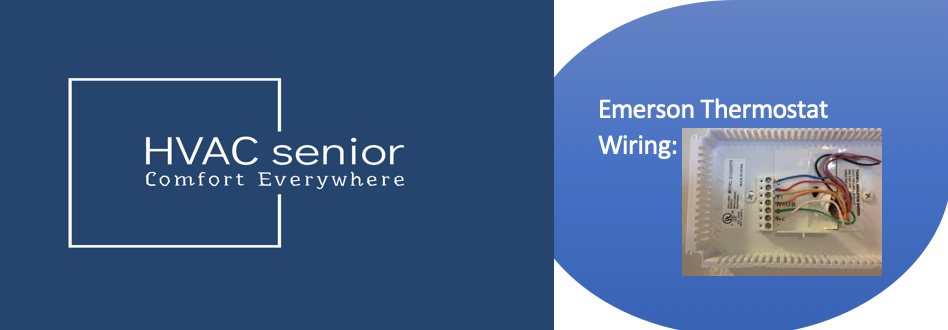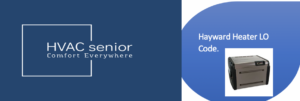When your air conditioner is blowing 70-degree air instead of that cool, crisp breeze, you instantly know that something is not right. A healthy AC system usually blows air in the range of 55°F to 60°F when working correctly. So, if your vents are pumping air out at 70°F or higher, your home will not cool down efficiently, which may be particularly true during summer heat waves.
In this article, we will be discussing why your AC is blowing 70-degree air, what it means, how to fix it, and when you should call an HVAC professional.
What does it mean when your AC blows 70-degree air?
An air conditioner is designed to remove heat and humidity from your indoor air. The air coming from your vents should be at least 15–20 degrees cooler than your home’s ambient temperature.
If your thermostat is set to 72°F and the AC blows 70°F air, then that is only a 2-degree temperature difference, meaning that it is not efficiently removing heat. This could be due to restricted airflow, low refrigerant, dirty coils, or mechanical failure.
In short, your AC runs but does not cool.
Normal AC Vent Temperature Explained
Before we look at the causes, let’s define what is normal:
| Condition | Expected Vent Air Temperature |
| Healthy AC System | 55°F – 60°F |
| Slightly Underperforming | 60°F – 65°F |
| Poor Cooling / Malfunction | 66°F – 75°F or higher |
If your vent air measures about 70°F all of the time, your air conditioner is not cooling well enough to maintain comfort or control humidity.
Also read: AC not Cooling Below 75.
Top 10 Reasons Your AC Is Blowing 70-Degree Air
Let’s break down the most common causes, from simple maintenance issues to major system faults.
1. Dirty Air Filter Restricting Airflow
The clogged air filter obstructs airflow and hinders it from passing freely through your AC system. Without proper airflow, the evaporator coil lacks the efficiency to absorb the heat appropriately, blowing relatively warm air through the vents.
Fixes:
- Replace or clean your air filter every 30 to 60 days.
- Use the proper MERV rating recommended for your HVAC system.
2. Low Refrigerant Levels
Refrigerant is the fluid responsible for absorbing heat from your indoor air. In case your system is low on refrigerant, resulting from a leak, it just won’t be able to take out enough heat, so the air coming out stays around 70°F or warmer.
Low refrigerant signs include:
- Hissing or bubbling noise from the indoor or outdoor unit
- Ice build-up on the evaporator coil or refrigerant lines
- AC runs continuously without cooling
Solution:
Call a licensed HVAC technician to find and repair the leak, then recharge the refrigerant to manufacturer specifications.
3. Dirty Condenser Coils
The condenser coil is located in the outdoor unit and releases the heat absorbed indoors. When it’s coated with dirt, leaves, or grime, the coil can’t expel heat effectively; it traps it in your system.
Corrected:
- Switch off the power supply to your outdoor unit.
- Gently spray the coils with a garden hose, not using high pressure.
- For heavy buildup, have the coils professionally cleaned.
4. Ductwork that’s blocked or leaking
When your duct system has leaks or blockages, cool air escapes before it reaches your vents. That means less cold air and warmer vent temperatures, often in the region of 70°F.
Correcting:
- Check ducts in the attic or crawl space for loose connections or holes.
- Seal gaps with mastic sealant or aluminum foil tape.
- Have a professional conduct a duct leakage test to ensure accurate detection.
5. Faulty Thermostat Calibration
Sometimes, the problem isn’t with the AC system; rather, it is with the thermostat. If it improperly reads the room temperature or if its communications with your unit are wrong, it may cause your system to cycle off early before it cools as it is supposed to.
Fix:
- Recalibrate your thermostat or replace it.
- Consider upgrading to a smart thermostat for more accuracy and efficiency.
Also read: Outside Ac unit not turning on
6. Dirty or Frozen Evaporator Coil
In your indoor air handler, it’s the evaporator coil that cools the air. If it becomes dirty or freezes, the heat exchange does not take place effectively, and your AC will blow warmer air.
CORRECTION:
- Turn off your AC and let the coil thaw completely.
- Change your air filter and ensure that no vents are blocked.
- Professional coil cleaning should be scheduled to clean away dirt and debris.
7. Weak or Failing Compressor
The compressor is the heart of your AC, pumping the refrigerant through the system. A weak compressor cannot maintain the required pressure necessary to adequately cool air. As a result, vent air temperatures remain around 68°F–72°F.
Specify:
If diagnosed with compressor failure, then professional replacement might be required. In older systems, replacing the whole unit altogether may be cheaper.
8. Oversized/ Undersized AC System
If your air conditioner isn’t the right size for your home:
- Oversized units cool too quickly without removing enough humidity.
- Undersized units run continuously but never reach the set temperature.
Both lead to inefficient cooling and 70-degree air output.
Correct:
Have an HVAC professional perform a Manual J load calculation to confirm your system’s correct size and recommend adjustments.
9. High Indoor Humidity Levels
High humidity in a home makes it feel warmer, even if the AC is technically cooling. Moist air holds heat longer, so the vent air might feel like 70°F even though your system is working.
Correct:
- Use a dehumidifier to balance indoor moisture levels.
- Make sure your AC’s drain line is clear because a clogged drain line prevents the removal of condensation.
10. Aging AC Unit
Logically, as an air conditioner approaches or surpasses 10 to 15 years of age, efficiency decreases. Wear and tear on coils, fans, and refrigerant components can make it impossible to reach target cooling levels.
Fix:
- Schedule a tune-up to see if minor repairs help.
- If performance doesn’t improve, consider replacing with an energy-efficient alternative.
Measuring Temperature at the AC Vent Correctly
Before assuming your AC is blowing 70-degree air, you should confirm it with an accurate reading.
Here’s how:
- Set your thermostat to “cool” at 72°F.
- Let the system run for 15 minutes.
- Place a digital thermometer inside a supply vent.
- Measure the return air temperature near the intake grille.
- The temperature difference should be 15°F–20°F.
If your supply air is only a few degrees cooler than the return air, then it is time for troubleshooting.
DIY Fixes Before Calling a Professional
If your AC is blowing 70-degree air, try these simple steps before calling for service:
- ✅ Replace the air filter
- Clean the outdoor condenser coils.
- Ensure all the vents are open and unblocked.
- Check thermostat settings and batteries
- ✅ Inspect ducts for visible damage
Schedule an HVAC maintenance visit; this can be done by professionals in order to check the refrigerant level, clean the coils, and test the system pressure.
When to Call an HVAC Technician
Call a certified technician if you observe:
- Continuous warm airflow even after maintenance
- Ice on refrigerant lines or coils
- Short cycling or constant running
- Strange noises coming from the outdoor unit
- Higher energy bills without improved cooling
A technician is able to diagnose the exact cause and restore performance properly.
Also read: Portable Air Conditioner Spitting Out Water
How to Stop Your AC from Blowing 70-Degree Air Again
Prevention is the best medicine. The following simple maintenance steps will keep it in top shape:
- HVAC maintenance should be scheduled twice a year-in the spring and in the fall.
- Change filters regularly
- Keep outdoor units clear of debris
- Seal duct leaks and insulate attic ducts
Install a programmable thermostat Monitor indoor humidity levels These steps can extend your AC’s life and ensure it keeps blowing cool, crisp air all summer long.
Final Thoughts
If your AC blows 70-degree air, it’s a warning that something is not right with your cooling system. Everything from dirty filters and clogged coils to low refrigerant and duct leaks could be the culprit. Regular maintenance, timely repairs, and smart HVAC upgrades can restore comfort to your home — while continuing to run your system efficiently for years.









